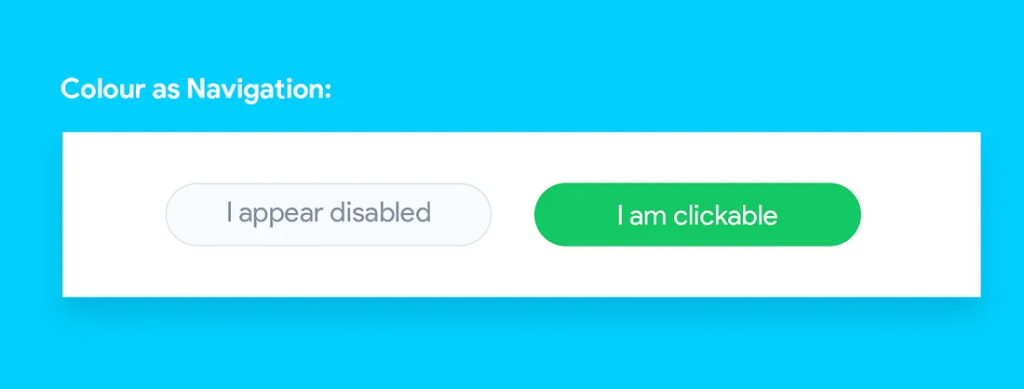A seamless user experience and an aesthetically pleasing user interface are critical more than ever.
User experience refers to making a user journey smooth while interacting with a website, a mobile application, or any other digital product.
It includes factors like ease of use, intuitiveness, and accessibility. UI refers to the visual design and the layout of the digital product and includes elements like colour, typography, and layout.
What is UI/UX Transformation?
UI/UX transformation involves improving the overall look, feel, and user experience of the website or mobile application.
This transformation involves a complete redesign of the existing UI/UX with the latest design trends, technologies, and user behaviour.
UI/UX transformation is not just about improving the aesthetic appeal of the website or mobile application; it is also about enhancing the overall user experience, making it more intuitive, easy to use, and user-friendly.

Reasons why UI/UX is essential for your business:
The first impression is the last. The first impression is often the last, especially online. With people doing online research before buying anything, poor UX and UI are likely to turn off customers immediately.
People expect a smooth and intuitive experience while interacting online.
A poorly designed website or mobile application is most likely to drive away visitors and move them to your competitor’s website or app.
Table of Content
- Accelerating Change: The Impact Of Mobile Applications On The Automotive Sector
- Leveraging Mobile Apps For Precision Agriculture And Crop Monitoring
- Full-Stack: The Key To Building Scalable And Agile Businesses
- A Step-by-Step Guide to Mobile App Development Process: Part 1
- A Step-By-Step Guide To Mobile App Development Part 2
- Mobile App Development: Unlocking The Power Of Technology For The Modern World
- 14 Must-Have Features For A Successful Mobile App In 2023
Increased competition
Currently, businesses are facing increasing competition. Consumers have a vast array of options to choose from.
So as a business owner, you should provide exceptional user experience to stay in the market.
A well-designed and user-friendly website or mobile application can make a huge difference and is more likely to attract more customers.
Improved User Experience
UI/UX transformation can significantly improve the user experience of any digital product.
By redesigning the UI/UX, you can create a delightful user experience to attract and retain more customers.
It can result in higher user engagement, increased conversion rates, and improved customer satisfaction.
Increased Conversion Rates
UI/UX transformation leads to higher conversion rates. By optimising the user journey and reducing the friction in the sales funnel, you can make it easier for the customers to complete their desired actions, such as making a purchase or signing up for service. It can lead to increased profit and revenue for your business.
Better Brand Perception
UI/UX transformation can improve your brand perception. A visually appealing and user-friendly website or mobile application can create a positive brand perception. It can result in increased customer loyalty, higher retention rates, and positive word-of-mouth advertising.
Cost Savings
UI/UX transformation leads to cost savings in the long run. A well-designed website or mobile app can reduce the need for customer support, as users are more likely to find what they are looking for on their own. It leads to lower customer support costs and increases your business efficiency.

UI/UX Transformation
UI/UX transformation is the process of updating the design and functionality of a digital product like a website or a mobile app, to improve the usability and user experience.
Unlike a simple redesign, UI/UX transformation involves a comprehensive evaluation of existing design to identify areas that require improvement.
It includes updating the user interface, optimizing the user experience, and improving the overall functionality of the product.
One of the main differences between a simple redesign and a UI/UX transformation is the level of analysis conducted.
A simple redesign usually involves updating the visual design elements of a product, such as the colour scheme, typography, and imagery.
On the other hand, a UI/UX transformation involves a more in-depth analysis of the user experience, including user research, user testing, and optimization of the user journey.
Elements of UI Design
Here are some elements of UI design and how they work in the context of a user interface:
Strategy
A solid foundation for successful user experience begins with strategy in the initial stage of your design process. At this stage, you determine customer needs, pain points, and your business goals.
A solid strategy helps you identify personas, story maps, and user stories. Scope involves your business’s strategic goals to meet customer-specific needs.
Your final content should meet your customer’s needs. And its functionality should fulfil your business product goals and objectives.
Scope
Scope involves using business strategic goals to meet user-specific needs.
Prepare content that meets your user needs while the functionality fulfils your business goals.
Define the product/service characteristics and additional value-added details and display them on the interface.
Language
When you consider language as a design tool, giving your business or product a justified name is the first thing you should consider.
A suitable name has the potential to set the mood at the very beginning of your brand’s experience. Come up with a set of words you can apply to every design direction you have.
Tones differ with your brand’s intent and decisions on what they portray—strict, scientific, friendly, entertaining, fun, or playful.
Colour
We respond to colours in a very emotive and subjective manner. Since colour is relative and subjective you must figure out how to control and get it to do what you want it to do for your user interface.
In short, use colours to create the intended atmosphere, mood, or function. Colour connotations are often the by-product of cultural influence.
Keep in mind how to use the colour and how it is going to impact your audience. In terms of function, you can use colour to enhance navigation in your interface.
For example, a green CTA button initiates active participation of your visitor, and a grey CTA button would refrain them from taking any action.

Source: www.mayowatobi.com
Image
Images are crucial in determining a great UI and UX for your website or mobile application. Images come in several shapes and styles, and they can serve as content, mood, and navigation in the context of an interface design.
For example:
If you want to put content for your audience with UI/UX in mind, put the images in grids or frames.
Images used for delivering content provide a comparative structure. They are appropriate when you need to work across content that is searched across different-sized platforms.
You can use immersive images that act as design elements. This kind of imagery is mostly used in applications and games.
Images set a tone or ambience that users can relate to.
To achieve superior UI/UX, create a style guide for your brand that clearly states the kind of images to be used, the colour, and fonts to be used and how to use them across an entire brand experience.
Images are also used for navigation. It is common in e-commerce websites.
Fonts or Typography
Fonts or typography works in several ways in the context of an app or website.
It includes content that your audience consumes. UI/UX is also part of your interfaces like buttons or labels.
It also becomes part of the branding system that gives your product a unique feature and identity. Use text as a visual form, and they must have a typographical representation.
Text is a better option in terms of representation in many cases, as they are a fast and accurate way to communicate complex and specific concepts.
Conclusion
UI/UX transformation is a critical process that can significantly benefit businesses.
By improving the overall user experience, businesses can increase customer satisfaction, loyalty, and revenue.
UI/UX transformation can also provide a competitive advantage and help businesses build a strong and loyal customer base.
In today’s fast-paced digital world, you should invest in UI/UX transformation to stay relevant and competitive.


